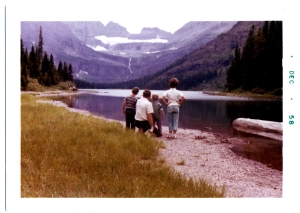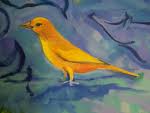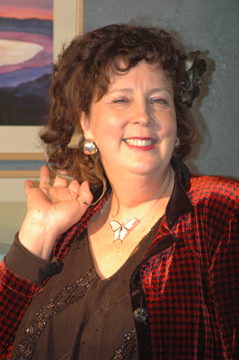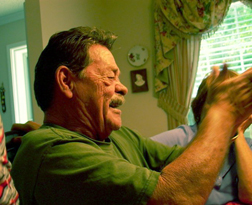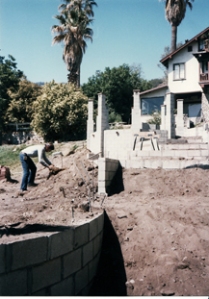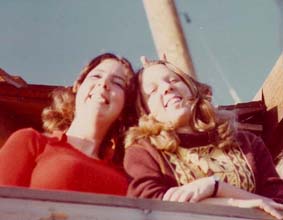September 2013 the Portland Brolutti family hosted over 75 people at a Big 6-0 birthday party for Kim Brolutti. This Pro Show video mixes photography and video taken by both Peter and Sandy Jensen to give a flavor of the day.
Kim Brolutti: Heart of Gold
Beautiful People
Mickey’s 87th Birthday
Eyes Turned On By the Snow
From Clay I Came, and to Clay I Shall Return
I have returned as an adult to scrutinize the little kingdom on the Wenatchee River where Lord and Lady Brown and their princeling and many princesses and royal menagerie ruled the apple orchard world.
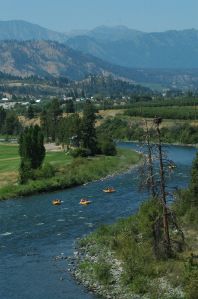
The little kingdom on the Wenatchee River... (Photo Credit: http://www.blueskyoutfitters.com/why-wenatchee.php)
From the top of the hill, I have tried to remove the gossamer crazy quilt of memory and see the landscape for what it is. I want to see it as ordinary, to strip myself of sentimentality and see clearly at last.
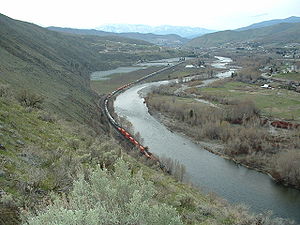
Looking upstream from the hills of northwest Wenatchee; a train hauling containers runs along the Wenatchee River. (Photo Credit: http://en.wikipedia.org/wiki/Wenatchee_River)
I see the river makes a wide bend, carving the steep cliffs of Sunnyslope on the far side. Then it sweeps in green rapids under the high trestle where the black pipe banded in iron cable carries irrigation water to the orchards; after that, it enters directly into the Columbia River.
During the as many as twenty-five Bretz Floods 15,000 to 13,000 years ago, when the ice plug on ancient Lake Missoula worried free and let loose at 80 miles per hour, the landscape of my childhood was shaped from the clay.

When the ice plug on ancient Lake Missoula worried free and let loose at 80 miles per hour, the landscape of my childhood was shaped from the clay. (Map Credit: http://www.waterencyclopedia.com/Bi-Ca/Bretz-J-Harlen.html)
The flooding Columbia backed up the Wenatchee and backed up Horse Lake Creek until my whole future life was under water. As the lake slowly settled, fine white silt created the clay bank a short ways up the canyon road from our house on the flood plain.
This steep cove was built of layers and layers of hard-packed clay laid down in parallelograms, so when I picked up a chunk and pulled it apart, it broke along angled paths. My siblings, cousins and I would scramble to the top and heave our clay bombs to the county road below. They exploded with satisfying cracks and poufs of white smoke that hung suspended in the quiet air.
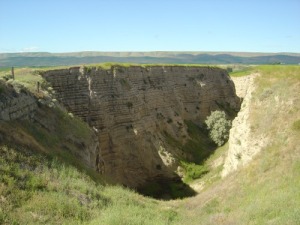
Little did we know we were dismantling thousands of years of slackwater sentiment. (Photo Credit: http://scienceblogs.com/highlyallochthonous/2009/06/the_lake_missoula_megafloods.php)
The clay was also just the right texture for tunneling. The soft, white dust got embedded under my fingernails, and I could feel it sifting down my shirtfront, caking in the sweaty creases of my knees. We jumped bare foot from high up, suspended like our bombs in the timeless air, revolving like the earth does around its sun at 18 and a half miles a second, until we came down rolling in a flying flurry of powder.

Like these kids jumping off a sand dune, we would join hands and throw ourselves in the air. (Photo Credit: http://www.guardian.co.uk/education /2009/jul/21/summer-holidays-children-opinions)
The bank faced north, so the clay stayed cool and shady during the scorching afternoons of August. We kids often played up there until the sun could be seen glinting red on the distant snowfields of the high Enchantments. I see this from my adult, God’s-eye perspective because I know that if I were riding my horse up Hay Canyon,

The glowing Enchantments would be visible, watching over our miniature valley world. (Photo Credit: by Marc Dilley http://picasaweb.google.com/lh/photo/VN5RmjFqNB1OGPOq8VOh_g)
But down in the canyon, we couldn’t see outside the clay cove surrounding us. It especially surrounded us as we dug holes and interlocking arches and tunnels. Completely absorbed in our play, deep inside the earth, we didn’t notice the movement of the sun across the sky.

You who run backwards through time, tell me, what have you learned from that old river of myth and blood, apples and wheat, river of snowmelt and memory? (When I Was a Child Mandala by Sandy Brown Jensen Prismacolor on black paper http://nightvisionjournal.blogspot.com/search?updated-max=2008-10-31T21%3A33%3A00-07%3A00&max-results=7)
The 15,000 year old clay held other curiosities for us. Every once in a while, we would unearth concretions—stone-hard nodules, usually flat, with funny appendages; like fresh ginger, they had knobs and ears that made me think of Ice Age animals. These we kids collected and hauled home to show Mom and Daddy, the assembled uncles and aunts.
![Claybabys_and_Dogs_006_Small_321x264[1] Image of clay concretions](https://sandyjensen.files.wordpress.com/2010/11/claybabys_and_dogs_006_small_321x2641.jpg?w=584)
Claybabies, also called concretions—stone-hard nodules, usually flat, with funny appendages; like fresh ginger, they had knobs and ears that made me think of Ice Age animals. (Photo Credit: http://www.foxisland.net/newsletter.htm)
After a long afternoon of digging and bomb throwing, we straggled back home through the apple orchards like a gang of little ghosts covered with our sheets of fine, white clay. Mom would meet us in the yard with a hose and turn the water on us: clothes, shoes, hands full of concretions—everything got hosed down. My dark braids plastered wet against my cheeks like twin question marks I would carry with me into my mysterious future.
Wet and shivering, we each got an old towel and were sent into the house through the basement door. Wet clothes got left by the washer, and we all went screaming with chatter and laughter back up the stairs to warm clothes and dinner.
Dreaming My Father’s Nightmares
When I was only three or four years old, my family lived in a small, cedar-shaked home close by to Lake Stickney in western Washington State. This house had an attic accessed by a set of stairs that swung down when you tugged on a cord dangling from the ceiling.
One day, Mom pulled the stairs down and let me play in the attic while she concentrated on her sewing.

I rubbed a circle in the dust of a little dormer window, and I could see across the narrow county road to the vine maple and cedar thickets beyond. (Photo credit: http://www.century21nhr.com/SearchResultsGM.aspx?freetext=Lynnwood+Territorial+views)
I had plenty of boxes up in the attic to make a playhouse for my dolls. In my rummaging around for objects that might amuse them, I found a plastic box full of fascinating objects; I didn’t know it then, but they were two purple hearts, a bronze star, a sharpshooter’s medal, various foreign coins, and a small, brass-studded German language Bible.
This was treasure that demanded an immediate explanation. I held the box carefully to my little chest as I negotiated the steep, slightly unbalanced stairs. Mom looked up from her sewing when I came into the room holding out the box.
Her eyes widened in shock, and she said with excited force, “Put those back where you found them! Don’t ever mention them to your father!”
The medal box, and Mom’s swift reaction to it was my first—and at age sixty, I have to now, most enduring—clue to the grim shadow thrown by my blond and sunny father.
In those youngest years of my life, I often had nightmares of being in a foreign country and having to enter a dark, low house built into the side of a hill full of hidden people. I was a grown man, I had a gun, and I was terrified.

I was a grown man, I had a gun, and I was terrified. (Photo credit: http://play.tm/gallery/6935/america-s-army-rise-of-a-soldier/image/5/)
These mysterious and frightening dreams held no content from media for no such thing existed in our household. Nor did the content come from my father’s stories of the war, for in my whole life with him, he only once mentioned the war. He told me he had learned to peel an orange in one continuous strip from a British soldier.

He said he learned how to peel an orange from a British soldier. (Photo credit: http://www.jupiterimages.com/Image/royaltyFree/88417261)
I believe now that my psychic bond with my father was so permeable that I either dreamed his nightmares or that his repressed memories entered my sleeping mind.
The Lost Children of Chechnya
Nov. 11, 2010
Is there anything more inexplicable than our ability to dream anxious,
compelling narratives from what seem to be other times, other lives?
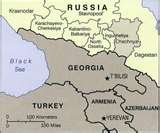
This dream took place in, as far as I could tell, a mountainous region of Chechnya, about which I know almost nothing.

I brought three children, all boys, say ages 2, 5 and 8—very young boys; I brought them on foot up a mountain, across alpine meadows, tree-covered ridges. (Photo credit:http://photopicture.us/chronicles/exhibition_01.php)
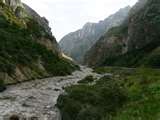
There was still some snow in the cold shadows of the forest. (Photo credit: http://maailmajapaikat2.wordpress.com/2010/07/15/darial-gorge/)
In a clearing high up, I found the cabin we’d been hiking toward, and we entered. It was a one room log cabin, but one side had been curtained off.
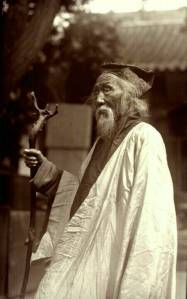
The priest lived there as a kind of hermit. I knew him as a humorous and kind man. I looked around, but he wasn’t at home; he came in from the woods shortly, as he was expecting us. (Photo credit: http://0.tqn.com/d/taoism/1/0/g/-/-/-/Old-Taoist-Priest-.JPG)
I’m not sure what we were doing there or how long I was to leave the boys in his care, but obviously not long. I was in charge of the boys’ safety; we were fleeing from some terrible danger.
I needed to leave the children for a short time, and I left, hiking downhill, across a meadow. A small plane circled, recognized me with a wing tilt, and landed on a narrow power line maintenance road (although there was no electric power available locally—I knew that—no communications.
I got in the plane for the short ride to a little town in the valley. The pilot started to taxi, and two more people ran out of the woods and got suddenly on board, and we took off irrevocably.
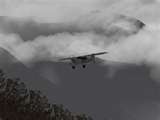
As it got darker, it got snowier, and we got further and further away. We weren’t going the short hop of my errand; this was a long and mountainous crossing to a distant town ... (Photo credit: http://forums.x-plane.org/index.php?showtopic=677)
One of the other passengers was my sister Cheryl, and the other an armed man; together, I knew we were all the protection the boys had on the mountain and somehow, through a too-quick and unconsidered decision, we were all on the same plane, flying away at dusk.
We flew down the mountain following the power line, often under it. As it got darker, it got snowier, and we got further and further away. We weren’t going the short hop of my errand; this was a long and mountainous crossing to a distant town with few lights and none of them electric.
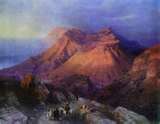
"Mountain Village Gunib in Daghestan" Painting by artist Ivan Aivazovsky (Photo credit: http://myhomekavkaz.blogspot.com/)
We landed on a dark air strip and put up in a small, dark-paneled old hotel room, Cheryl and me together. I was pacing the room, beside myself with anxiety for the safety of the boys. I knew the hermit priest would take basic care of them,
Thinking About Starting Over: “Why do you come, yellow bird?”
Marco Menato gave me some good thoughts about this blog. He said:
“More about your blog. I think the blog format remains primarily a vehicle for the expression of an individual’s POV/spirit. Your write well and have an opinion … that’s why you are readable and will have an audience. For instance, the last entry was not as gripping as the Eric eulogy precisely because you were seeking to achieve a (commendable-maybe, shared-by-many-perhaps) goal, rather than expressing your Self for the sheer pleasure of it. Note that what you received in response was mostly perfunctory support rather than highly charged emotion or structured thought…”
I am struggling to find the right focus for my blog. I want it to promote my memoir pieces about my community, and I had this idea that I could offer a service to the community by being a “Newslight” type reporter. But already that isn’t ringing true. Maybe the title and concept are all wrong for me? Maybe I should call it the name of my book:
“Special, Gifted Divine, Twenty Years in EDL Community,” or “Home to Glen Ivy.”
HOWSUMEVER, I also have essays from my family background, and I’m working on an Oregon novel. The book marketing advice to me has been to focus on just one topic. But as a person who keeps multiple journals at one time, I am starting to imagine a Word Press web site with three or four blog columns or categories–like a Sandy Brown Jensen online magazine-style representation of my mind.
I was reading my favorite blogs this morning, and I found I was attracted more to headlines like, “why do you come, yellow bird?” and “Yeats and the dusky path of a dream” and less to the “My Top 10 Tools for 2010″ type headlines, which are touted to improve SEO (search engine optimization).
Marco’s good thoughts makes me want to take it apart, rename it, give it a different theme (skin) and start over, which I am perfectly willing to do. And I probably will as I follow this dusky path of my dream…
Four Things This Blog Can Do For YOU: My first blog entry after a long hiatus introducing my vision for its future
Hi, Everyone!
In August, I posted a eulogy forEric Crocker. You sent in your comments and memories of Eric from all over the world. I felt embarrassed and stopped writing for a while because I wasn’t the grieving widow; Jeannie Kezlan is. I’m just an old girlfriend who also happens to be a writer and a blogger.
A public forum like a blog is able to act as a community hall where many voices may be heard. I understand that a lot better now. However, I had to take a break after the blog about Eric to take time to think and reorganize my brain about us—you, me, and a blog where we can go deeper sometimes than we can on Facebook on the many topics that interest us Emissaries, mostly ex-Emissaries, and intentional communitarians living in eco-villages and other alternative towns all over the world. That’s us! You. Me. Throw in a few people from my community college world, and my god, who isn’t in some kind of community worth talking about?
But running a blog is like running a magazine; I have to be in it for the long haul. It takes time, thoughtfulness, and a willingness to let many voices be heard. The part of me cracking the whip to get on this project is the old Newslight reporter in me. She’s still hunched over an old Smith Coronamatic up in her Glen Ivy Lodge attic room banging out the news of the month.
- She’s worried that Laurence Cole and the Songweavers were just on a West Coast CD release tour, and why wasn’t I out there on the blog letting everyone know?
- John Connor from the recent Green Pastures Reunion just reached out on Facebook to share his pictures of that event, and I found I wanted to hear his stories. Facebook Group Site Green Pastures Fond Memories
- Francine Ladd posted pixs from our 1979 YES Group at Glen Ivy, and I suddenly realized what a wealth of untold stories are out there in the hearts and minds of old YES-Groupers everywhere.
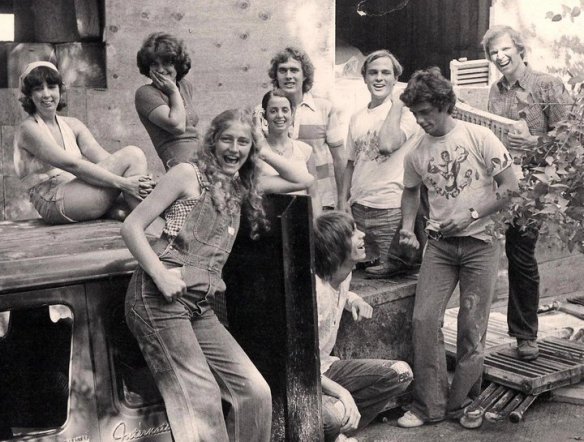
1979 YES Group at the Glen Ivy Community; Me on the left, Jody Blechman Isaacs, Francine Ladd, Tracy Carrara, Johnny Amey, Chris Ayres, Dave Sarbeck, Darrell Droguett, David Reis
These events and memories don’t interest the entire planet; I get that. But for some of us, it’s these threads of memory that weave us back together. Many of us broke with the past a little more completely than we wanted to, once all the dust had settled after Martin’s death. Facebook has brought us back together. I hope this blog can act as a forum for two-way seeing: looking inward to the past and outward to the present.
Four Things This Blog Can Do For YOU!
1. Connect to other Em and ex-Em bloggers; tell me who you are and let’s blogroll together!
2. Explore memories of our shared past; remember, I am first and foremost a memoirist–I love to hear your stories!
3. Promote your events, your communities, your projects!
4. Welcome in people who are living in community now and explore and celebrate their experiences, interests and concerns.
If you want to subscribe (free, obviously) to this blog, remember, you can put it on your Google Reader or i-Google homepage, Yahoo homepage, etc. Ask me how!
Do you have other ideas about how this blog can serve our far-flung community? Leave a comment and let me know!
Crocker and Brownie (In Memorium for Eric Crocker Aug. 13, 1940—Aug. 21, 2010)
Crocker and Brownie
(In Memorium for Eric Crocker Aug. 13, 1940—Aug. 21, 2010)
It is a popular fiction that we humans only get one true love per lifetime, but I have been blessed with two. This is the story about my first true love, Eric Crocker.
I don’t have much to add to the literature of love at first sight: it’s as all the romantics say—whammo! Right between the eyes!
I have often thought I have lived my life to date in three dream worlds: the first, of my childhood; the second, as an Emissary of Divine Light; the third, my life as a writer, teacher and married woman. I lived in that second dream when I met Eric, and our love blossomed there in the orange blossom air of the Temescal Valley.
I have to explain some changes that were going on at our intentional community, Glen Ivy, to describe where we met. The Lodge, which was the major building on this land we Emissaries purchased in 1977, had some of the original adobe structure from the late 19th century—1873 is one estimated date, but it could have been be a few years older—post-Civil War 1860s. The kitchen had been up-to-date maybe in the 1950s, but all that had to come out and be rebuilt. While the construction was going on, the cooking shifted over to a more ramshackle place we called the old Administration Building.
It had a big front room and a tiny kitchen. Mary Shannon Keating, Angela Herauf, and Gloria Frank Rubin lived there at the time, putting up with the constant noise of an impromptu communal dining hall. In the winter, all the windows would steam up with our collective breath and the breathing of big pots on a stove never designed to handle more than a frying pan and a teakettle.
We heart-held humans measure time by births, deaths, and kitchen rebuilds. Eric told John Gray he came to Glen Ivy before the Gray’s daughter Melissa was born, which was April 1, 1978. So in late March 1978, the lunch crew had set up an outdoor dish station. Eric had just arrived, and I think he had already spotted and asked about me because he called out to me in his fearless impudence, “When are you going to leave the rest and come to the best?” That was a reference to my friendship with Allen Shackleford. Allen and I had a “let’s go to the movies” type friendship, but it was a warm and true one—oh, the many paths of memory, that garden of forking paths.
But the moment I first saw Eric, my heart did double-time. They say time stops when you meet a true love, and I can say it did for me. Eric was scraping his plate and laughing at me. He wouldn’t win any contests for heights and he had the bandy-legged roll of many short men, with the something that is very Argentine—an aggressive throwing out of his feet as he walked. His background included a childhood in Uruguay and long-time associations with Argentina and Mexico. He worked throughout the late eighties until the end of his life as a translator.
He had short, only slightly wavy, caramel colored hair, and he was certainly good looking in a way that went straight to my image of beauty in a man. His eyes were real show-stoppers—an unusual shade of aquamarine with green and brown flecks; wide set with a hint of a tilt, and clear as high mountain lake water. He had an ever lively, expressive face full of mischief and flirt and charm to spare. Renita Dreidger Wellman called him, “That pirate,” and Bev Petow called him, “The cuss,” which gives a beginning idea of the variety of impressions he made on women, anyway.
He was and remained a smoker, preferring Marlboros while in the States but switching to Mexican unfiltereds the second he crossed the border. Eric’s hands were always busy with the business of the smoke—unwrapping a new pack, crushing an old; shaking out a cigarette; the ritual of the light, the inhale, the exhaled cloud of smoke—often a glass of tequila in one hand, a smoke in the other. I am willing to bet he’d say he was never happier than at such perfectly balanced moments with only the addition of, say, the smell of barbequing steak in the air. Although for sure he wouldn’t let me have the last word on that one.
Eric was full of sexy joie d’vivre and masculine self-confidence. He was very funny and a big tease. I did not fall into bed with him right away; I gave him a run for his money, but he did not go without feminine attention as other women who were around at the time can testify. I was dating Allen, chastely because I was confused about the okay/not okay status of peer-to-peer sex within our spiritual group.
At a certain point in the history of these years, John Gray gave a, uh (delicate throat clearing moment here) seminal service where he said, and I quote from memory, having completely forgotten the rest of the context, “You weren’t issued a chastity belt when you were invited to live at Glen Ivy, you know.” That seemed to clear my mind about it a little bit. Not that I was a virgin. I’d had a couple of college encounters, and Larry Johansen and I had certainly had a hot and too brief affair when we both lived in the Westwood Emissary Center, but years definitely went by that were all sizzle and no steak.
With Eric and me, it was always sizzle, and when we got around to the steak two years later, it was the full meal deal. Meanwhile, he joined my circle of friends. When he was in the room, I always felt like an exotic, exciting woman. Because of Eric, I wore off the shoulder peasant blouses, long skirts with tiers of ruffles; I wore my hair long and always had a flower behind my ear. I was no beauty, but his clear, blue-green gaze convinced me otherwise. He lit the fire of my inner beauty, a flame I have tried to never let go out.
As I write, that young woman re-emerges on the page, a barely recognizable butterfly flitting through my story like some dazzling other woman—young, excited, and in love.
At Glen Ivy, our days merged into the flow of community. Eric worked on the endless construction projects, which took, as John Gray said to me in a recent e-mail, “A lo-o-o-ng time.” I had a job at Parkview Community Hospital in Riverside. I would often cook breakfast in the little Ad Building kitchen at 6:00 am, go to work in town, and be scheduled to set tables or do kitchen clean up in the evenings. I understand I’m writing now with decades of hindsight that has blurred my vision, but that said, as I remember it, I endured my employment hours impatient with the urge to get back to Glen Ivy where everything truly important to my life and destiny was going on (and I wasn’t wrong about that). My ongoing flirtation with Eric gave every day a champagne fizz, the Rice Krispy snap, crackle, pop of young hormones. I was 28 but may as well have been 18.
The only way for me to really remember Eric out of the flow of the river’s sweep of community life is to recall the times we traveled together away from Glen Ivy. The hottest of those trips was the one we took across the desert to Phoenix, Arizona, to attend a big party celebrating my sister Toren’s graduation from nursing school. I had told her we couldn’t attend because I wanted to surprise her.
When Eric and I got into town, we stopped at the Chris-Town Mall (now called Chris Town Spectrum Mall) and bought a set of king-sized pillowcases. We parked a block away from Toren’s house and giggled like a couple of kids as we cut eye holes in the pillow cases, which, when we put them over our heads, dropped down a fair way toward covering our complete torsos. She would never guess who we were.
Outside Toren’s door, we struggled with each other’s pillowcases to get them on with all the coverage possible, then Eric, both arms pinned to his sides, leaned on the doorbell.
Toren threw the door open and, confronted with two refugees from the Klu Klux Klan, yelled without a pause over her shoulder, “Hey! It’s Sandy and Eric!” To this day, I have no idea what gave us away. Open-minded hostess Toren, not knowing we weren’t sleeping together, put us up in the same room, and I have to say that ooh! la! la! After that we were, and how.
I don’t want to forget my life with Eric. I don’t want to forget our trip into Arizona’s rugged Bradshaw Mountains. We set out on a hot spring weekend, but not too hot, maybe in the low 90’s. Eric was driving Allen Shackleford’s old blue pickup truck with a heavy aluminum camper on the back.
We pitched a tent down in the cottonwoods where a creek glimmered out of the redrock country into a shady thicket. It wound for a mile under rocky bluffs and under big trees and through early grassed meadows. The water was warm and we were alone, so we stripped down for some water sports. I am always the first one in the pool, so after I had ducked myself cool, I turned around to look for Eric. Here he came down the shady path stark naked, barefooted with all the ginger assurance of a dog in a stubble field, a cigarette in each hand because he didn’t have a pocket for a pack and he thought it might be a two cigarette swim.
The dirt road into our private idyll had not had the benefits of a Swiss engineer. The descent from Crown King to the love canyon where we were frolicking like young deer had been steeply angled, full of potholes muddy with spring run off. I had no notion of physics in those days, so I was amazed when Eric announced, “We might’ve gotten this truck in by the sheer force of gravity, but it ain’t going out the way it came in. Get out the map, Brownie, we have to get out the back door of these little hills.”
We put our heads together of the map and he pointed, “Here.”
I squinted, “Congress? It doesn’t look big enough to have an outhouse.”
“You better pray it has a gas pump because this hay burner is down to a half a tank.”
Thus began an epic trip through the spectacular, rugged back country of Arizona. The Bradshaws are rough, broken up sandstone. I have the benefit now of technology as yet unborn then–a panoramic look using Google Maps. I see we were in Prescott National Forest, which looks like a piece of heavy duty construction paper wadded up real tight then spread out on an extra piece of the globe no one else was using. (I’m sure the Hohokam, Yavapai and Apache Indians would all consider that a pretty stupid thing to say.) The land is crinkled, rucked, folded, bent, spindled and mutilated into landforms we inadequately call mountains, hills, ridges, arroyos, creeks and canyons. I see a picture online of a Jeep on Old Crown King Trail, which is a jumble of boulders and potholes, no more than an idea of a track on the backside of country my husband says looks like the border between Afghanistan and Pakistan.
Eric’s hope for no more vertical ascents as we headed for that distant point called Congress was a joke. He drove that truck with his right hand, his left elbow out the window, cigarette kept inside the cab, for that is flammable country. Those were pre-seatbelt days. I jounced from doorframe to headboard trying to wedge knees, shoulders, and hips to keep from cracking my head repeatedly on the nearest piece of truck. Eric drove with verve and aggression, attacking hills with speed at calculated angles, sometimes doing a back and fill, other times taking multiple runs at the same impossible hill.
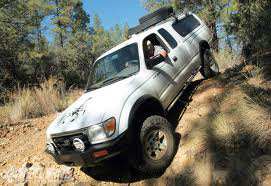
I see by this more recent photo on Google images that the roads through the Bradshaws haven't improved any in the last thirty years!
Finally, even Crocker was semi-defeated by the hopped-up road builders of the Bradshaw Mountains. “Brownie,” he finally said, “we can’t do it with this much weight on the truck.”
“I can get out and walk again,” I volunteered.
“We’ve already tried that on the last five hills. We’re not going to get out of here if we don’t lighten up. That means taking off the camper and leaving anything else non-essential behind.”
I couldn’t believe what I was hearing. I was born and raised in the Cascade Mountains of Washington State, and I had never heard of such a thing. But that’s exactly what we did. We unbolted Allen’s camper and between us and with more help from gravity, left it on the side of the so-called road. For all I know, it’s still there, a rusty monument to a desperate moment.
“Put our food and water in a pack for the front seat. That heavy metal cooler has to stay, too.”
Leave a cooler behind? My mind just couldn’t get oriented to the reality of our situation.
“And our suitcases, tent, camping equipment and sleeping bags. We can pile it under the camper in case anyone can ever come back for it. Or to help some other lost sucker out of gas and out of luck.”
I finally got it. “Like the pioneers on the Oregon Trail leaving their pianos behind.”
“Now you’ve got the idea, Brownie.”
A few hundred pounds lighter, the truck still struggled up the hill under Eric’s lash. And down another and up the next. We tried to keep track of where we were on the map, but that way lay madness.
At one point, Eric said, “Just for the record, we have no gas.”
We didn’t have gas for the next two hours as we battled our way out of the Bradshaws, made the long, straight run across the outwash plain on, as the popular saying goes, a wing and a prayer, coming into the thriving metropolis of Congress (population about six in those days, but population 1717 as of the 2000 census) through a blazing red sunset. The whole world bathed in gold dust as we barreled into town, what there was of it. But there was a gas pump, and a café, steak and tequila, and I can still see Eric sitting back in the red vinyl booth with a cigarette and a shot glass, boasting how he’d gotten the best of a worthy enemy.
In 1981, the world wide Emissary nation embraced what was called the Human Unity movement with a year of meetings, fund raisers, and celebrations in collaboration with several other humanistically-oriented individuals and groups ranging from Brother Love Israel’s family to Marilyn Ferguson, author of The Aquarian Conspiracy. We were all pointing our efforts at staging a conference and happening at the University of British Columbia in Vancouver, B. C.
I wrote a poem in English and in Spanish with the help of Argentine friend Claudia Chaves called Primer Poema/ First Poem, and Eric and I were sent off in a borrowed Corolla to present it as part of the invocation ceremonies at this big culminating event.
For some reason, we had lots of time and drove up the Big Sur coast of California through the California Redwoods, skipped the Oregon Coast in favor of I-5’s directness, but at Washington, we swerved west around the Olympic Peninsula, some of my home territory. We saw a dark-furred mountain beaver up on the Hoh River Road. We hiked along the Hoh on a sunny day. Side pools radiated a rich blue green that comes from light refraction on suspended glacial silt. I’d been coming here since I was a kid—I knew these ponds were beautiful to look at but constantly one degree south of permanently icing over. But Eric couldn’t resist.
He took off his clothes, placed his lit cigarette on a patch of wet moss, where it promptly went out, and walked out on a log. “C’mon, Brownie!” he yelled, gesturing to me to join him, “No guts, no glory.”
Eric jumped in, and I’ve never seen anyone come up out of water so fast in my life. He gave walking on water a new believability. Clearly, Jesus Christ had caught the Sea of Galilee on an icy cold day and was spinning his legs like cartoon wheels to keep from falling back into the Arctic depths.
“You didn’t even get wet,” I complained as I handed him a T-shirt to dry off with. Later, when we told this story to John Gray, he said, “Your heart could’ve stopped!”
When Eric had changed from blue to something approaching normal coloration, we drove around to Dungeness Spit, a five and half mile long tongue of sand sticking out into the Strait of Juan de Fuca. We bought a loaf of bread, some rock crabs, and a bottle of red wine and spread a picnic under a huge old driftwood log. We tore the bread with our hands, knocked the crab open on rocks, and passed the bottle back and forth as another sunset the color of meatball sauce drenched the sky and the reflecting mirror of the sea in that tomato soup red. I am lucky that the map of my world is dense with flagged pins of happiness, but that one is the red of sunset and still signals all that is best to eat in this world, and where, and with whom.
If memory and an Internet search serve, the 8th annual Humanity Unity Conference in Vancouver, B. C. gathered over a thousand people together. It certainly looked that way from up on the stage, looking out at the swaying, chanting mass of humanity. Eric and I were introduced and an expectant silence fell. The collective attention of a thousand people focused on Eric and me and my little poem. I will probably never again have so many people listen to a poem of mine so attentively. We recited it line by line, me in English, Eric in Spanish:
First Poem
This is my first poem in your language
because it is not enough to love you from afar.
What is it that draws one self
out of the mountainous dark of the north
to reach out to the red arrow of the south?
What moves my heart to extend and embrace
the complex, vehement sweetness of South America?
I don’t know.
But I know with a slow and singular flame I love its jungles,
its Pampas, Andes, those legendary cities,
and people of gold.
Pulsing with the exactitude
of nature’s casual perfections,
steeped in music and wine,
ripped by clearcuts of land and soul,
washed in blood of trees and people,
blood both green and red, yet
do you set the feather to my heart.
As I walk the rough streets of Los Angeles,
gazes of the southerly lands meet mine as if
we had always known each other.
I rush to speak to you,
but we have no common tongue.
“But I am your sister!” is my soulcry;
grieved, I see your eyes turned away from mine,
having no faith in the primary fire
of first recognition.
I believe in that fire
like I believe in the sounds of dreams
or a sudden bell.
I will learn your language;
will you learn mine?
Border guards roam the pockmarked face
of the disputed land,
but let them not trespass
in the pristine cartographies of the heart.
A united heart without boundaries
calls us beyond ourselves—let this be
our first poem together.
Primer Poema
Este es mi primer poema en tu lengua,
porque no es suficiente amarte desde lejos .
¿Qué es lo que nos impele, desde la penumbra montañosa
del norte, a extender la mano
hacia la flecha roja del sur?
¿Qué insta a mi corazón a estirarse y abrazar
la compleja y vehemente dulzura
de América del Sur?
No lo sé.
Pero sé que con una llama lenta y singular
amo sus junglas,
sus pampas, sus Andes,
aquellas cuidades legendarias
y pueblos de un oro inderretible.
Pulsando con la relajada exactitud
de perfecciones naturales,
empapada de música y de vino,
bañada por sangre verde y roja: de árboles y gentes,
hendida por el talado de sus bosques
y violaciones a su espíritu auténtico …
con todo,
me enciendes el alma.
Caminando por las calles inclementes de Los Angeles
miradas de tierras sureñas se cruzan con la mía,
como si nos conociéramos
desde siempre.
Apresuro el paso para hablarte
pero no hablamos e mismo idioma.
“¡Soy tu hermana!” grita mi alma;
y me entristezco
al ver que tu mirada me rehuye ,
por no tener fé en la esencia candente
del primer reconocimiento.
Yo creo en ese fuego como creo
en el sonido de los sueños o de una campana
repentina.
Aprenderé tu idioma;
¿aprenderás tú el mío ?
Guardias fronterizos deambulan
por la faz llagada de tierras en disputa…
¡que no invadan
las prístinas cartografías del corazón!
Una voz unida nos llama más allá de nosotros:
que sea éste nuestro primer poema
juntas.
When we concluded, instead of applauding, one thousand people put their hands in the air and twinkled their fingers in the air. I felt lifted off the stage in a rush of feeling, as if they had all flicked on the little flames of lighters as they do at rock concerts and the huge hall was filled with the flicker of those soul flames.
Because of Eric’s family connections with Uruguay and Argentina and his Spanish fluency, he spent increasing amounts of time in South America developing an Emissary foothold. While he was gone, I started to hang out with his best friend Bill Martin. I don’t have many kind thoughts about myself in that dance of change partners. I seem to have developed my moral compass a little late in life because I was not as forthcoming with Eric as I wish now I had been. I did some dumb things, and I hurt a person I loved. There came a point where it seemed like I had a choice between going to Argentina with Eric and going to graduate school, and I chose graduate school. By 1982, I was teaching at the University of California at Riverside.
It all unraveled in a bigger mess than that. I wish now I had known what the term passive aggressive meant. When Eric went to Argentina, we were a couple; he came back and I was dating Bill, and I had never written to Eric or given him any clues that my life trajectory had changed. Any time we make people guess and deprive them of the respect implicit in direct communication, we fall back into the shadowlands of humanity.
When I knew and loved Eric, he had already had a family with his first wife Sandra Angelou, and he became a great grandfather.
After me, he went on to have three more wives. I hope they all loved him as I did for our time together, with the giddy abandon of a true love.
I went on to have a second true love, and I have always secretly delighted in the strange synchronicity that their birthdays are only a week apart deep in the hot month of August.
Smoking finally caught up with Eric in the form of Metabolic Acidosis and Multiple organ failure, and he died a few days after his 70th birthday.
It’s hard to learn what to say when a true love dies.






